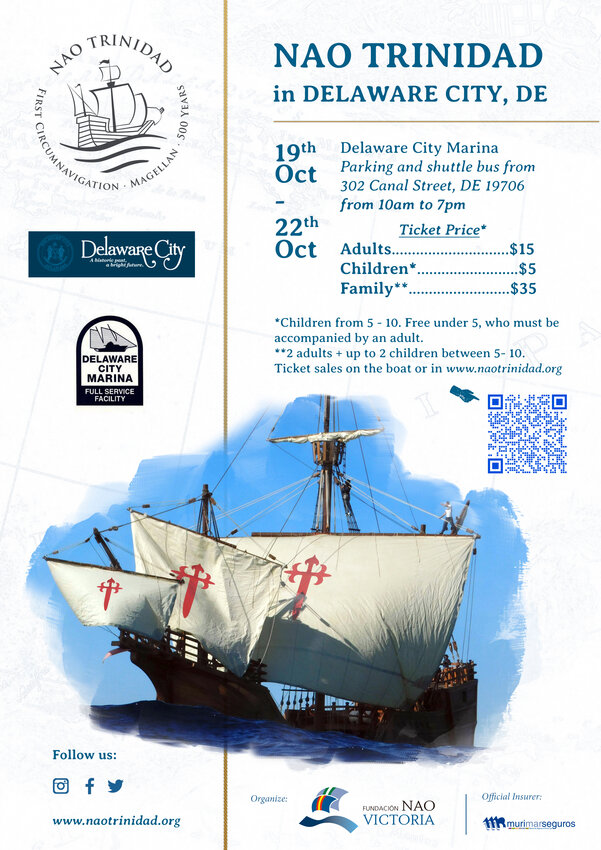The Nao Trinidad arrives in Delaware City Oct. 18
DELAWARE CITY — The Nao Trinidad, a replica of the flagship of Magellan-Elcano’s expedition, will arrive in Delaware City Oct. 18 and dock at Roundout Creek at the parking and shuttle bus …

You must be a member to read this story.
Join our family of readers for as little as $5 per month and support local, unbiased journalism.
Already a member? Log in to continue. Otherwise, follow the link below to join.
Please log in to continue |

The Nao Trinidad arrives in Delaware City Oct. 18
DELAWARE CITY — The Nao Trinidad, a replica of the flagship of Magellan-Elcano’s expedition, will arrive in Delaware City Oct. 18 and dock at Roundout Creek at the parking and shuttle bus from 302 Canal Street.
Tickets are $15 for adults, $5 for children and $35 for families and will be open for tours from 10 a.m. to 7 p.m. Oct. 18-22.
The visitors will be able to tour four decks, to feel how the life was like onboard at the time and how it is to live today on an historical ship of these characteristics. They will be able to learn about maneuvering, the rigging and interact with the crew.
After visiting Kingston and Oyster City, where she received more than 8,000 visitants, she continues her path to Delaware City expecting to keep spreading the maritime heritage.
The Nao Trinidad was the flagship of what was called Armada del Maluco (1519-1522), captained by Ferdinand Magellan. Five ships (Naos) departed from Sevilla, but only two made it to the Spice Islands, Nao Trinidad was one of them.
This replica weights 150Tn, 93ft in length, and has a 26ft beam, three masts and a bowsprit. The height of the mainmast is more than 82 feet, five sails and five decks, built with an exquisite work in Iroko (African hardwood) and pinewood. This ship has sailed to many different ports across the Mediterranean Sea and the Atlantic European Coast as a training vessel and floating museum.
The Naos have this unique and original design that made them the most advanced in naval engineering, used first as cargo ships in Spain and then taking the lead as exploring vessels. She is a full-scale replica, faithful on her design and dimensions. More than a hundred artisans of the sea worked on her construction: such as ship carpenters, rope masters or naval engineers.
For tickets, visit fundacionnaovictoria.org.





